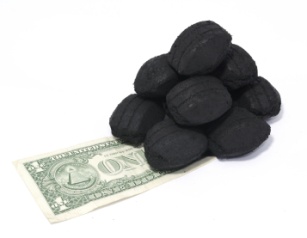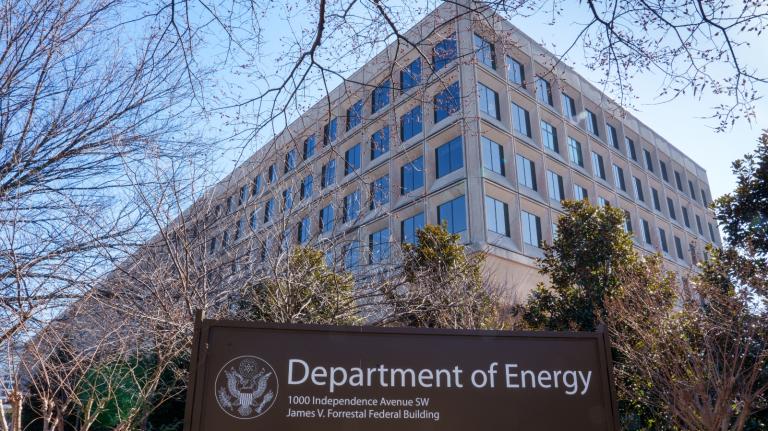 Cross-posted from the Natural Resources Defense Council.
Cross-posted from the Natural Resources Defense Council.
As the Environmental Protection Agency (EPA) prepares the first-ever national standards for carbon pollution from new fossil-fuel power plants, the coal industry is embarking, predictably, on its latest disinformation campaign to try to block these desperately needed public health and climate safeguards. New coal plants are dirty, risky, and expensive. No wonder the smart money won’t touch them.
Flacks for the coal lobby have their hair on fire about the rumored content of draft EPA standards that haven’t even been released. They say the standards will kill new coal plants. Haven’t they been paying attention? No one wants to build new coal plants. Except for a handful already underway, no more are planned for the foreseeable future. We don’t know what the EPA draft standards say, but we should all be asking a simple question: Exactly why should the EPA write a standard that is gerrymandered to make room for dirty power plants that the private sector does not want to build?
Let’s look at the facts. Starting about 10 years ago, there were waves of announcements for scores of new coal plants. In all, nearly 200 coal plants were proposed. Now only a handful of these projects are technically alive and they are on life support. A small number of proposed plants have permits, but like many previous plants with such permits, most, if not all, of these proposals will turn out to be vaporware. A permit may get a developer a meeting with project financiers but it will not get their money. The finance community understands new coal plants are simply not economic, given the alternatives that are available.
Other than a few plants under construction, there is virtually no prospect of new conventional coal plants being built in the next quarter century, according to the Energy Information Administration (EIA). EIA reports [PDF] no new conventional coal plants coming online after 2012, and only two gigawatts of coal plants with carbon capture and sequestration coming online around 2017; then nothing more through 2035, the end of the EIA forecast period.
Are the rumored new EPA CO2 standards responsible for the collapse of the new coal plant boom? No. Market forces have rejected new coal plants. Abundant supplies of natural gas have produced lower prices for that fuel and those low prices seem here to stay. Materials costs have risen substantially, and that makes capital-intensive coal plants a bad bet. Energy efficiency is increasingly recognized as the smartest way to balance power supply and demand and is enabling economic growth with lower electricity demand. Cost reductions in renewable resources like wind and solar, along with supportive policies, have resulted in rapid growth of these cleaner energy sources to meet new demand and replace retiring dirty coal plants.
The market is also penalizing proposals for new conventional coal plants due to their very high CO2 emissions. Financiers know that denying the fact of global warming will not make it go away. So a project with high CO2 emissions has a large built-in financial risk that only grows over time. And that risk is unbounded, since without a clear policy roadmap it is impossible to make a reliable estimate of what it will cost to mitigate a conventional coal plant’s high CO2 emissions.
The long lead time for coal plants underscores the conclusion that these projects are bad bets. It takes about 10 years to build a coal plant from initial conception to start-up. Then it takes another 15-25 years for investors to get their money back. Even without low gas prices, investors would have to believe that no action to address CO2 pollution will be taken over the next quarter century for them to put their money at risk in new conventional coal plants. This is not a risk that sensible investors are willing to take. So it should be no surprise that plans for new coal plants have been abandoned right and left in the United States.
As for a new EPA standard for CO2, we won’t know what it says until early next year, according to EPA Administrator Lisa Jackson. But let’s assume the EPA were to propose a fuel-neutral standard for new fossil plants, one that could be met by new natural gas combined-cycle plants or by new coal plants with carbon capture and storage (CCS). Such a standard would not prevent the construction of new coal plants (if and when the private sector decides such plants are a better option than alternatives). No, such a standard would just provide a level playing field for the two leading fossil fuels in the power sector: coal and natural gas. (Such a standard would not create a truly level playing field for electric resource investments since it would still heavily favor fossil fuels over zero-emitting options like efficiency, renewables, or nuclear if the latter’s many problems could be solved.)
Such a fuel-neutral CO2 standard would permit a new coal plant designed to capture about 60 percent of its CO2 to be built. The coal lobby will complain about the cost of CCS, but that cost will never get lower if standards are rigged to ensure no new coal plants will ever have to employ CCS. Why spend money to improve a technology for which there is no market?
The bottom line is that it is not the cost of CCS that is blocking new coal plants today; it is the cost and risks of plain old dirty coal plants compared to the alternatives that are shelving these proposals.
Of course, no one should be surprised that the coal lobby thinks that a level playing field standard is the policy equivalent of the swine flu. But should we build new power plants in order to prop up the coal industry? We want new power resources, not to help burn more coal, but to provide heat, light, comfort, and convenience, and to do so reliably and in a manner that does not send our kids to the emergency room with asthma attacks, our parents to an early death, or condemn our grandchildren to a planet with a climate so disrupted that their lives will be an unending torment.
Despite the coal lobby’s rhetoric, building new conventional coal plants is a bad economic bet for society as well as for individual investors. Even in countries where building a new coal plant appears to be cheaper than investing in cleaner energy, the International Energy Agency (IEA) reports that going down such a path will produce huge net economic losses. IEA reports [PDF] that for every dollar “saved” by investing in a dirtier power plant before 2020, countries will wind up spending more than $4 after 2020 to overcome the impact of those dirty investments.
So let’s have the debate. The market has walked away from conventional coal plants. Should the EPA try to hold back the tide of market forces? Should the EPA set CO2 standards for new power plants that are twisted to make the coal industry happy? Or should the EPA follow the law and good policy and set standards that provide a level playing field for coal and natural gas and avoid locking us into another round of new multi-billion dollar old coal technology that will cost us more and damage our health and the only climate we have?



